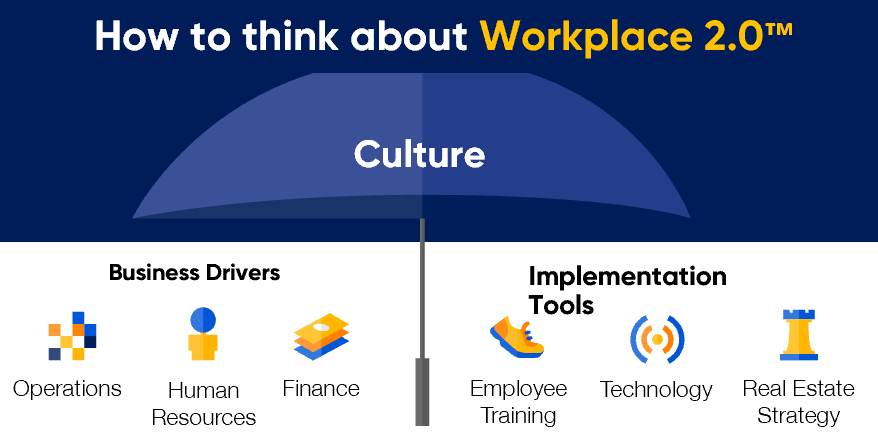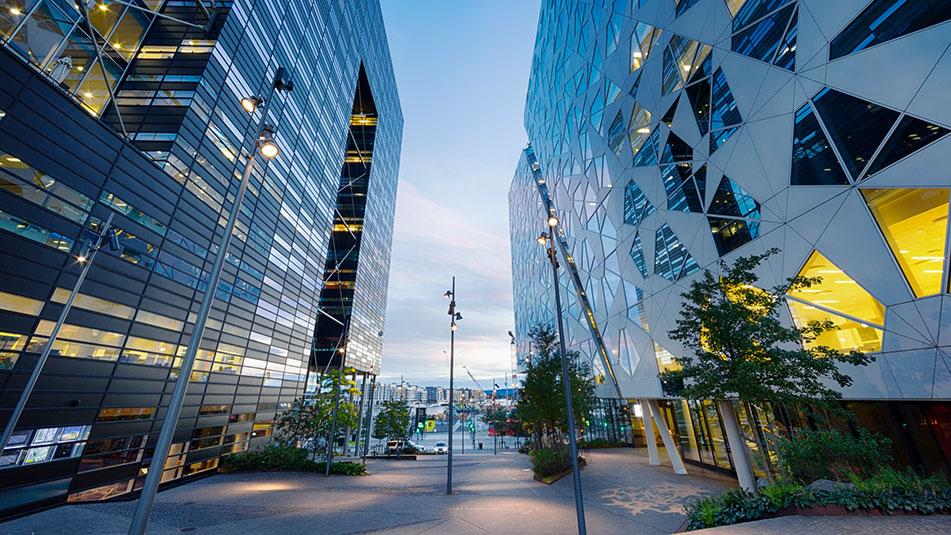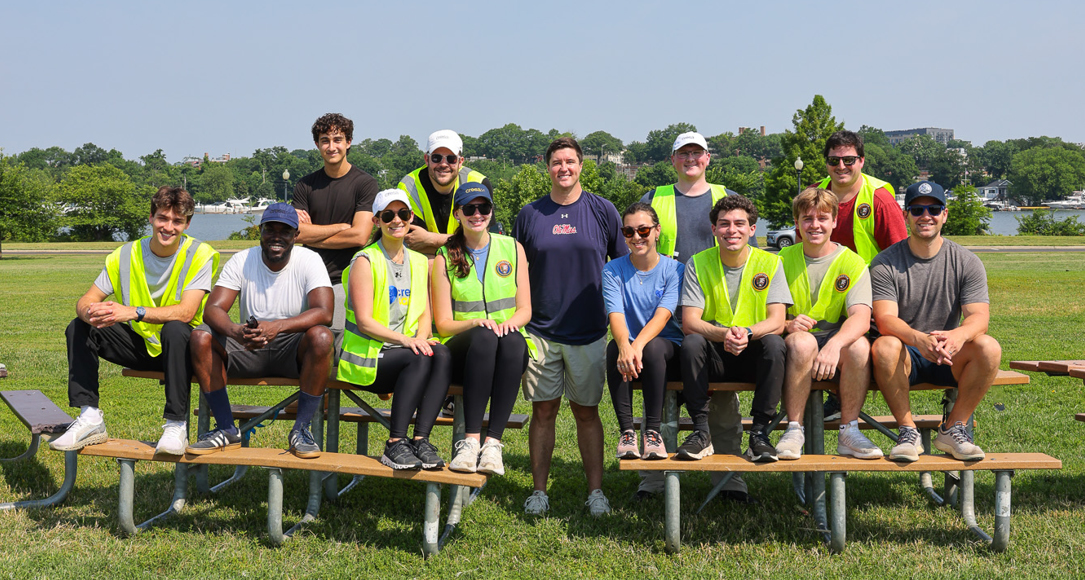Workplace 2.0™ — Taking Advantage of a New Culture of “Work from Anywhere”
For a webinar by the author on this topic, click here: Cresa Webinar: Workplace 2.0
As companies emerge from the mandated work from home environment, they will begin asking questions such as, “How do we get our employees back to the office and keep them safe?” and “How will we reduce costs in a challenging economic environment?” But perhaps the most interesting question is, “What lessons did we learn about remote work?” The circumstances caused by the health crisis smashed the work-from-anywhere barrier. Now, the question is “How do we take advantage of the opportunity to re-think our workspace and the ability to work at the best location to maximize productivity, talent and financial return?”
Working from home is not a new concept. Before the health crisis, many employees already worked from home and, as a result, were more productive. A Stanford study reported a 13% increase in productivity from telecommuters. Given the current success many companies are experiencing with remote work, it is not surprising that a March 2020 Gartner survey of 317 CFOs showed that nearly 1 in 5 respondents expect that 20% of their employees will work from home going forward.
What does that mean for the design and location of the future Workspace? The old model of a successful Workplace was built on 4 key elements: Talent, Culture, Technology and Physical Space.

It is the 4th element that has exploded. The workplace is no longer a single, shared location, focused on the interior design. The fourth element can now be defined as:
BOTH the design of the office space AND the best location (home/office/other) - to maximize productivity, talent and financial return.
All the other elements of a successful workplace are still relevant but viewed through a new lens. The workplace has been transformed into a network of flexible, convenient and on-demand spaces that leverage technologies to allow freedom-of-movement and purposeful collaboration.

The new paradigm combines the concept of physical space with purposeful methods of collaboration – whether in-person collaboration or through digital mediums. We call this new paradigm Workplace 2.0 .
How do you apply Workplace 2.0? It all starts with culture. There must be a culture that is open to a new way of working that contemplates a fresh view of Work from Anywhere. Under the umbrella of culture, some of the key business drivers to consider include operations, human resources, and finance.

1. Operations — Finding ways to drive value and performance: You need to decide what types of jobs are best suited for remote work and when employees need to be in the office. You may need to reconfigure your office space and take proper security measures with employees using personal computers.
2. Human Resources — Finding ways to drive culture and morale: How will you determine who is best suited to work from home? Are these the people who work best independently and have the necessary resources to get the job done? Managers will need to communicate larger company goals so that remote workers can make unsupervised, independent decisions. They may also need to shift communication venues, such as going from email to instant messaging. It is important to set expectations from the beginning, to avoid misunderstandings.
3. Finance — Finding ways to save money, make money, and drive better employee/customer satisfaction
a. Workplace Design: Reducing the number of fixtures, furniture, and equipment needed within your space can lower costs.
b. Employee & Customer Satisfaction: Happier employees are more likely to stay at a company, which therefore reduces employee turnover. This saves you money in the long run by not having to rehire and train employees. Satisfied employees also drive a better customer experience, that leads to retaining customers, reducing customer acquisition costs, and increasing the lifetime value of the customer.
c. Real Estate: Perhaps the greatest cost savings tool is to reduce the amount of space you lease. Depending on the amount of space each person occupies and the rental rate, savings can range between $3,000 and $10,000 per remote employee per year.
The dropping of the cultural barrier has provided a significant opportunity to maximize productivity, talent attraction and retention, and financial results. The next step is to think through an Evaluation Process and create a strategy for your organization utilizing four steps: Discovery, Analysis and Planning, Implementation, and Managing.

1. Discovery: Create a team that has ownership of the process. The team will evaluate the current environment and define specific goals that are measurable and accomplishable.
2. Analysis & Planning: Develop management and training plans, as well as an overall blueprint that outlines the entire initiative. The blueprint should include justification, that is the business case for why you are making the change.
3. Implementation: Roll out policies and procedures, compliance issues, and evaluate the technology and infrastructure that facilitates the “Work from Anywhere” strategy.
4. Managing: Reporting analytics, ongoing support for the program, and managed services for some of the technologies you’ve implemented.
The cultural barrier to “Work from Anywhere” has been torn down, changing the way that we work and opening doors to new opportunities. This demands a new view of the workplace –Workplace 2.0™. Start with a mindset that “Work from Anywhere” is possible and ask yourself “What is our new Workplace 2.0™ strategy that will maximize productivity, talent, and financial return?”




